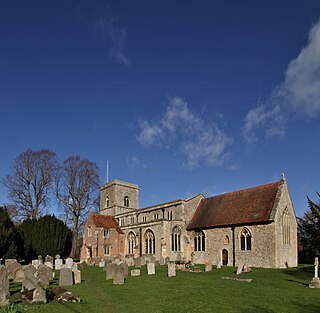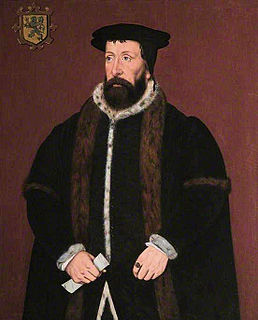Related Research Articles

The Benedictines, officially the Order of Saint Benedict, are a monastic religious order of the Catholic Church following the Rule of Saint Benedict. They are also sometimes called the Black Monks, in reference to the colour of their religious habits. They were founded by Saint Benedict of Nursia, a 6th-century monk who laid the foundations of Benedictine monasticism through the formulation of his Rule of Saint Benedict.

Reading is a historic market town in Berkshire, South East England. Situated in the Thames Valley at the confluence of the rivers Thames and Kennet, it is on the Great Western Main Line railway and the M4 motorway. Reading is 40 miles (64 km) east of Swindon, 25 miles (40 km) south of Oxford, 40 miles (64 km) west of London, 15 miles (24 km) north of Basingstoke, 13 miles (21 km) southwest of Maidenhead and 15 miles (24 km) east of Newbury.

Reading Abbey is a large, ruined abbey in the centre of the town of Reading, in the English county of Berkshire. It was founded by Henry I in 1121 "for the salvation of my soul, and the souls of King William, my father, and of King William, my brother, and Queen Maud, my wife, and all my ancestors and successors." In its heyday the abbey was one of Europe's largest royal monasteries. The traditions of the Abbey are continued today by the neighbouring St James's Church, which is partly built using stones of the Abbey ruins.

Berkshire is a county in South East England. One of the home counties, Berkshire was recognised by the Queen as the Royal County of Berkshire in 1957 because of the presence of Windsor Castle, and letters patent were issued in 1974. Berkshire is a county of historic origin, a ceremonial county and a non-metropolitan county without a county council. The county town is Reading.

Hugh Faringdon, earlier known as Hugh Cook, later as Hugh Cook alias Faringdon and Hugh Cook of Faringdon, was a Benedictine monk who presided as the last Abbot of Reading Abbey in the English town of Reading. At the dissolution of the monasteries under King Henry VIII of England, Faringdon was accused of high treason and executed. He was declared a martyr and beatified by the Catholic Church in 1895.

Sutton Courtenay is a village and civil parish on the River Thames 2 miles (3 km) south of Abingdon-on-Thames and 3 miles (5 km) northwest of Didcot. Historically part of Berkshire, it has been administered as part of Oxfordshire since the 1974 boundary changes. The 2011 Census recorded the parish's population as 2,421.

Henry of Essex or Henry de Essex was an Anglo-Norman nobleman who was feudal baron of Rayleigh in Essex and of Haughley in Suffolk. He served as one of the royal constables during the reigns of Kings Stephen and Henry II by right of his second wife, which office included the duty of bearing the royal standard to indicate the location of the king when on campaign or in battle. In 1163 he was convicted as a traitor, having been defeated in trial by battle, and took the habit of a monk, spending his last years at Reading Abbey.

Sir John Mason was an English diplomat and spy.

Appleford-on-Thames is a village and civil parish on the south bank of the River Thames about 2 miles (3 km) north of Didcot, Oxfordshire. It was part of Berkshire until the 1974 local government boundary changes. The 2011 Census recorded the parish's population as 350.
Cadwgan also known as Cadwgan of Llandyfái or Martin was a Welsh cleric who was Bishop of Bangor from 1215 to 1236.
Cholsey Abbey was an Anglo-Saxon nunnery in Cholsey in the English county of Berkshire, which was founded in 986.
Robert de Sigello was a medieval Bishop of London and Lord Chancellor of England.

Abbey Mill, or Abbey Mills, is a ruined former watermill on the Holy Brook, a channel of the River Kennet in the English county of Berkshire. The ruins are grade II listed.

Little Coxwell is a village and civil parish in South East England, about 1.5 miles (2.4 km) south of Faringdon and 0.8 miles (1.3 km) east of Great Coxwell. Little Coxwell was part of Berkshire until the 1974 local government boundary changes transferred the Vale of White Horse to Oxfordshire.

The Abbey Gateway was originally the inner gateway of Reading Abbey, which today is a large, mostly ruined abbey in the centre of the town of Reading, in the English county of Berkshire. The gateway adjoins Reading Crown Court and Forbury Gardens and is one of only two abbey buildings that have survived intact, the other being the Hospitium of St John the Baptist. It is a grade I listed building, and includes a porters lodge on the ground floor and a large open room above the gate.
Occupation at the site of Reading may date back to the Roman period, possibly as either a trading port on the River Thames, or as an intersection on the Roman road connecting London with Calleva Atrebatum near Silchester.
Adam de Lathbury, O.S.B., otherwise known as Adam of Lathbury or Adam Lothbury, was a Benedictine monk who ruled as Abbot of Reading Abbey, in the English county of Berkshire, from 1226 to 1238.

The following is a timeline of the history of Reading, the county town of Berkshire in England.
References
- ↑ "Houses of Benedictine monks: The abbey of Reading | British History Online". www.british-history.ac.uk. Retrieved 2020-10-29.
- ↑ Kemp, Brian R. (1968). Reading Abbey – An Introduction to the History of the Abbey. Reading, Berkshire: Reading Museum and Art Gallery.
- ↑ Slade, Cecil (2001). The Town of Reading and its Abbey. MRM Associates Ltd. pp. 1–16. ISBN 0-9517719-4-9.
| Catholic Church titles | ||
|---|---|---|
| Preceded by John I (of Appleford) | Abbot of Reading 1342-1361 | Succeeded by William III (of Dombleton) |